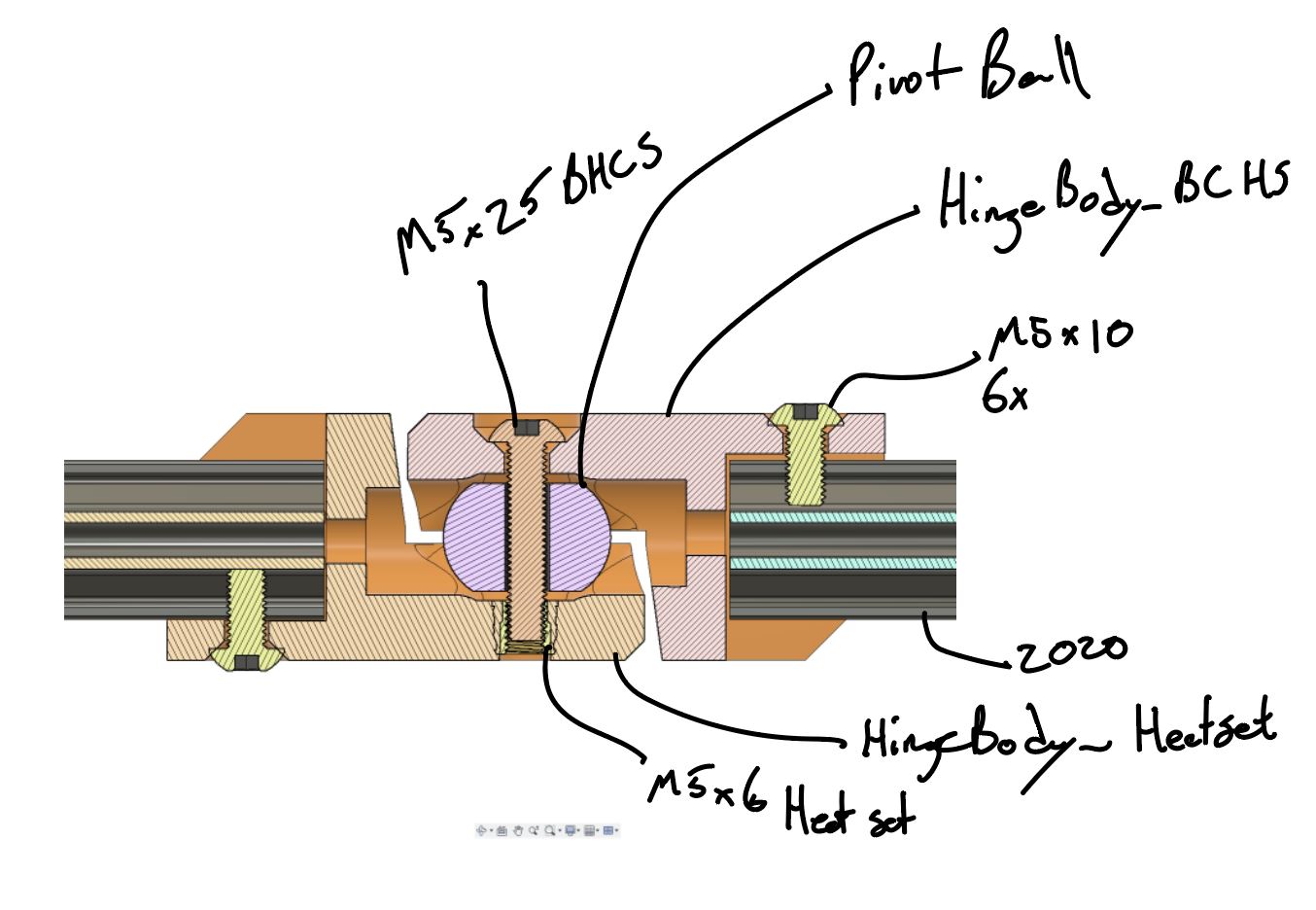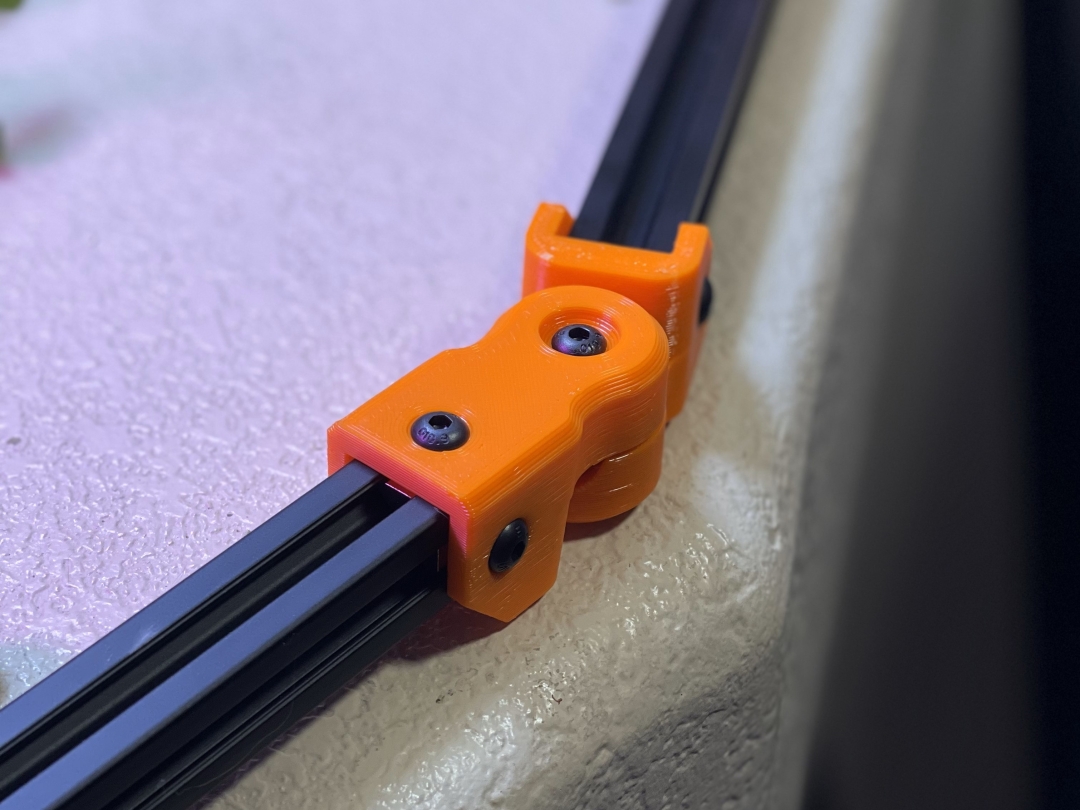BubsBuilds Projects
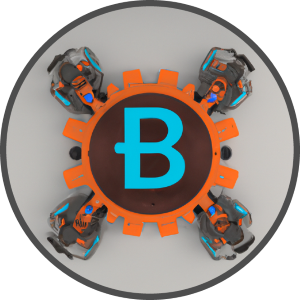
- Details
- Parent Category: BubsBuilds Projects
- Category: WIP
The Before (aka current state...as I write this)
Wants / Issues / Etc
- Stiffness and Stability
- The main issue prompting me to tackle this update.The main issue that I want to address is stability and stiffness.
- The current build is extremely susceptible to vibration...turns out a stiff membrane of glass supported at a dozen or so points is not exactly a surface plate :)
- This manifests in shakey video if a camera is put on the tabletop (not ideal), and, more problematic, very noisey measurements when attempting to measure, calibrate, or the like.
- I've also noticed that it is quite easy to deform the tabletop enough to cause problems in repeatability and stability in measurements.
- Fracture Toughness
- Although that tempered glass is damn strong, and I have never had any issues with it (as it's intended use as a floor rolling mat, nor as a table), it just makes me a bit too nervous. So I'd like to do something to mitigate the risk.
- Track System Integration
- I've been tinkering with an idea for a track system more generally. I want to be able to move and position equipment around, mainly cameras, lights, etc. to start, but I'm hoping to expand it...including a little roller coaster...cause, ya know...important stuff
- This should only require some mount points of sufficient strength, since the plan for the track system is for it to be modular.
- Lighting
- I think it'd be cool to have some integrated under-table lighting.
- Just to add some extra fun and complexity, I'd like to have these lights be addressable and RGB (or some other option for controlling the colors).
- Power / Utility Distribution
- This one may be a challenge unless I want to sink quite a bit more time into this build, but it would be awesome to have
- 110VAC
- USB A
- USB C
- Compressed Air
- My current solution of one of these clip on outlet thingies has been working
- This one may be a challenge unless I want to sink quite a bit more time into this build, but it would be awesome to have
Design Notes
2024/02/10 - Gettin started
- Glass Border - Rigid
- This will be the main mechanical support around the perimeter of the glass, and will need to provide as close to a rigid line of support to the Glass Border - Seal as possible to ensure full contact (more on this later)
- Interface to cross supports and sub-structure.
- Attachment points and possibly additional interfaces for accessory mounting around perimeter. Current plan is to have the track system attach to the 2040 sub-frame (re-used from existing build), so should not need to account for this explicitly.
- Features on the 'inside' should be consistent/coordinated across these and all cross support elements that will be in contact/near-contact with the glass. Ideally these features will offer an easy path to implementing the underglass lighting. Currently thinking maybe I could do some sort of groove config that would allow modules to be slid in, or similar.
- Glass Border - Seal
- These will be TPU (or similar) components that will sit between the Rigid border and the glass.
- They will be the only line of defense against a huge, siliconey mess...Should attempt to make this as fail-safe as possible.
- Although compliance will be important for ensuring a seal, these will be in the load path between the Rigid border and the glass. So this desired compliance for sealing will need to be balanced with a need for stiffness to reduce vibration in the table.
- Cross supports
- I haven't thought much about these specifically yet, but they will also likely be two part. However, the TPU component for those will only need to act as a tolerance take-up pad (more or less).
- 2040 to Wire Shelf Interface
- Rigid mounts that connect the 2040 sub-frame to the 1" posts of the wire shelves below.

2024/02/11 - Revising Glass Border Parts
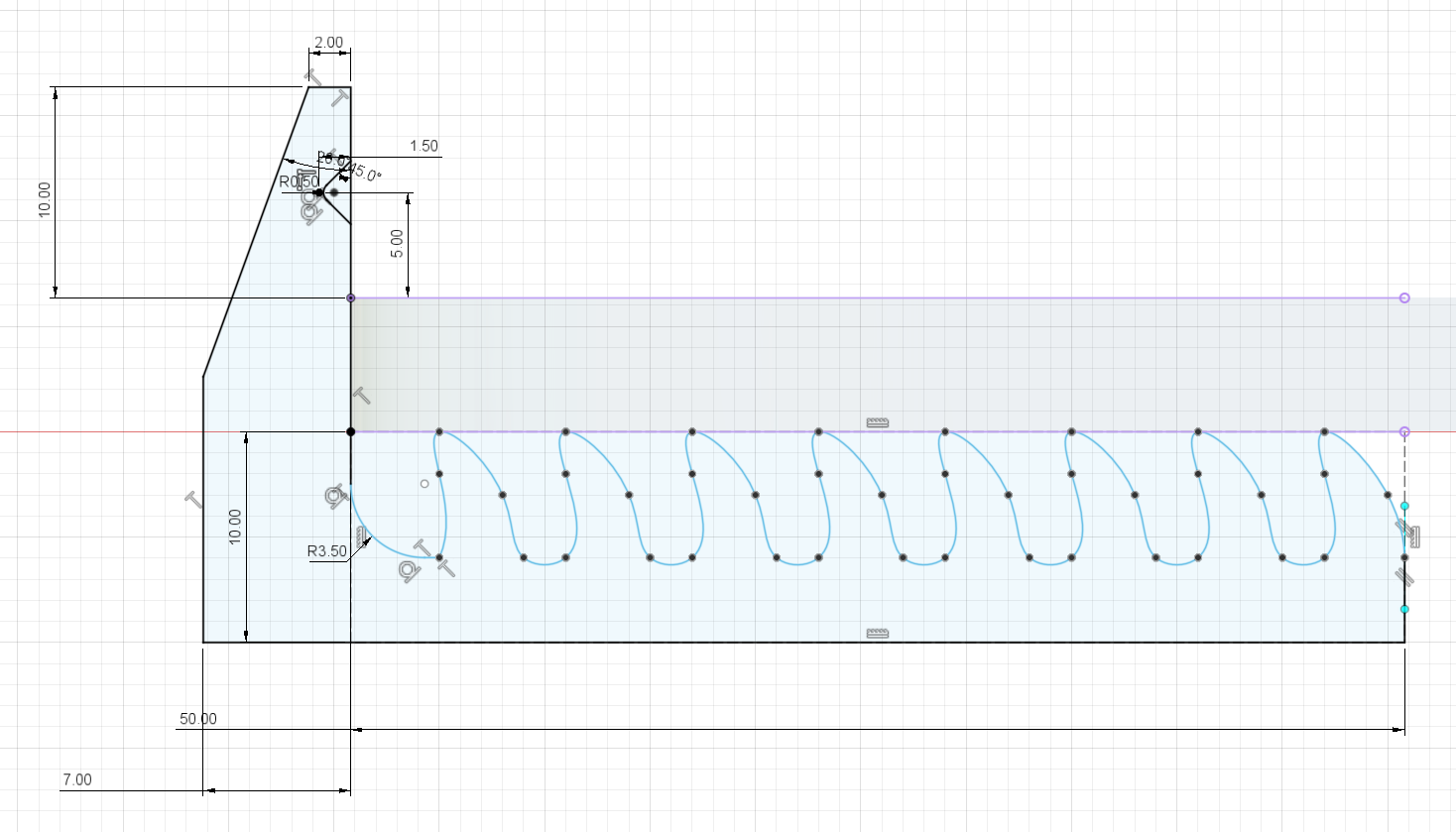
- The fluid will be attempting to flow against the seal. If you can picture a fluid filling the cavity in the leftmost contact, as you pressurize that fluid, it will press up against the 'finger' of the seal, pressing it harder against the glass. You can imagine the reverse by now just pressurizing a fluid coming in from the right side. That fluid pressure would push down on the top of the finger, reducing it's preload force against the glass. If the fluid pressure is high enough, the preload is broken...and ya got yourself a leak.
- As the fingers deform, the rest of the body of the part wants to move to the right, relative to the glass. This should help turn some of the gravity preload into a lateral preload holding the edge of the glass against the sidewall of the Seal...actually, in writing that, it occurs to me that I should add a compliant contact for this that is softer than the bottom contacts. The vertical stiffness is much more important than lateral stiffness, so my instinct is that I want to make sure that the bulk of the preload is taken up by the vertical features....I'll have to ponder this a smidge
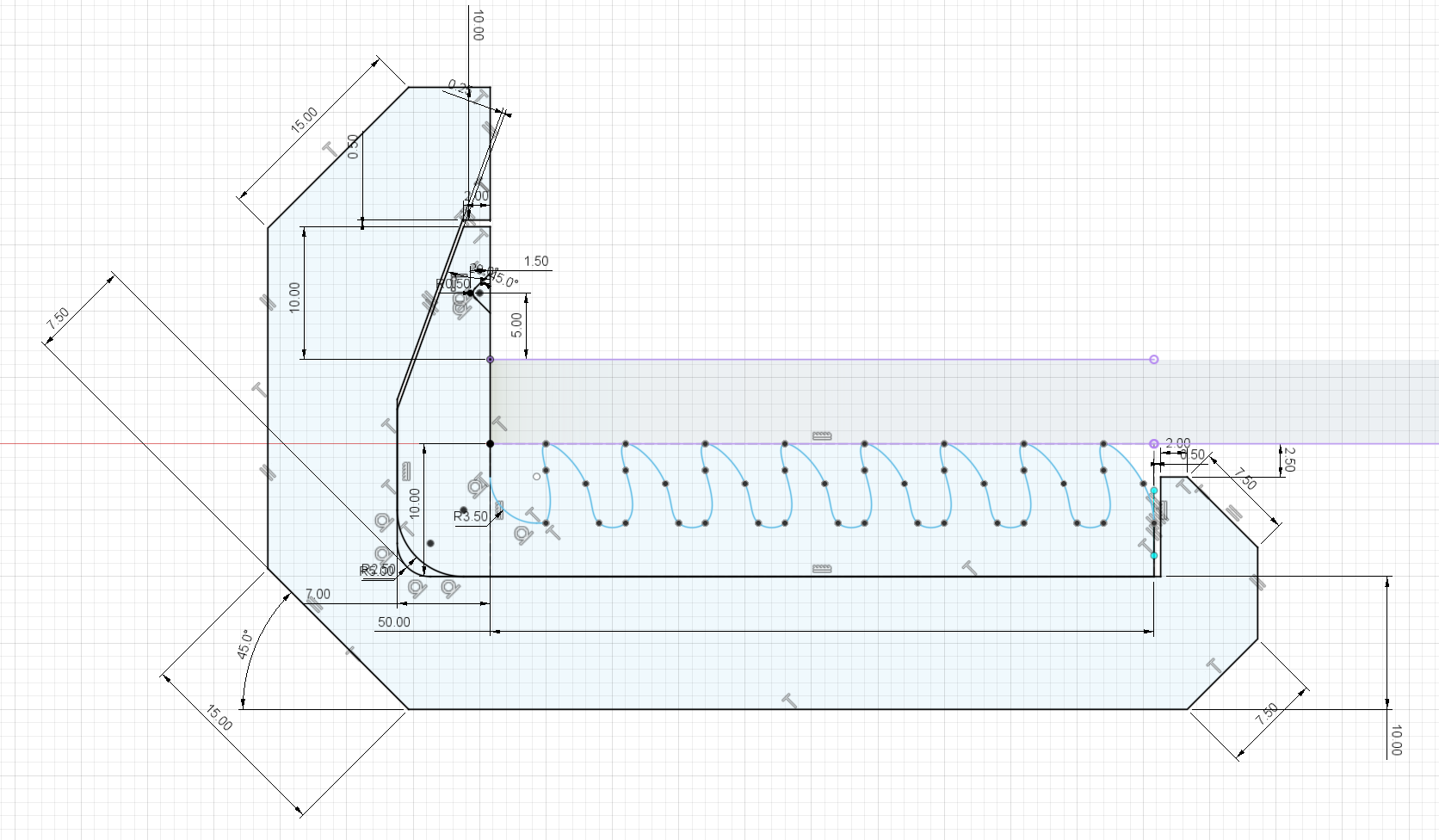

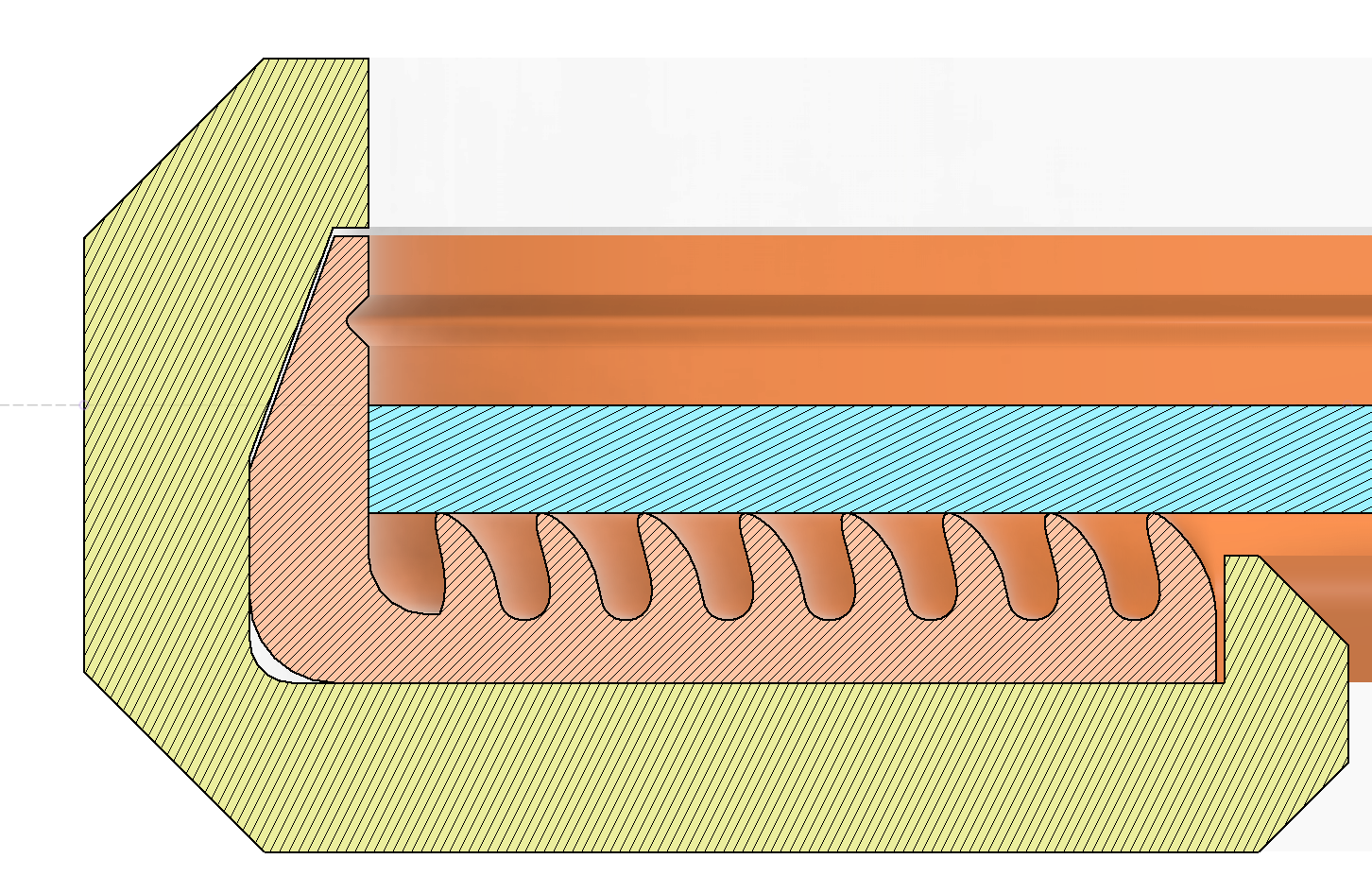
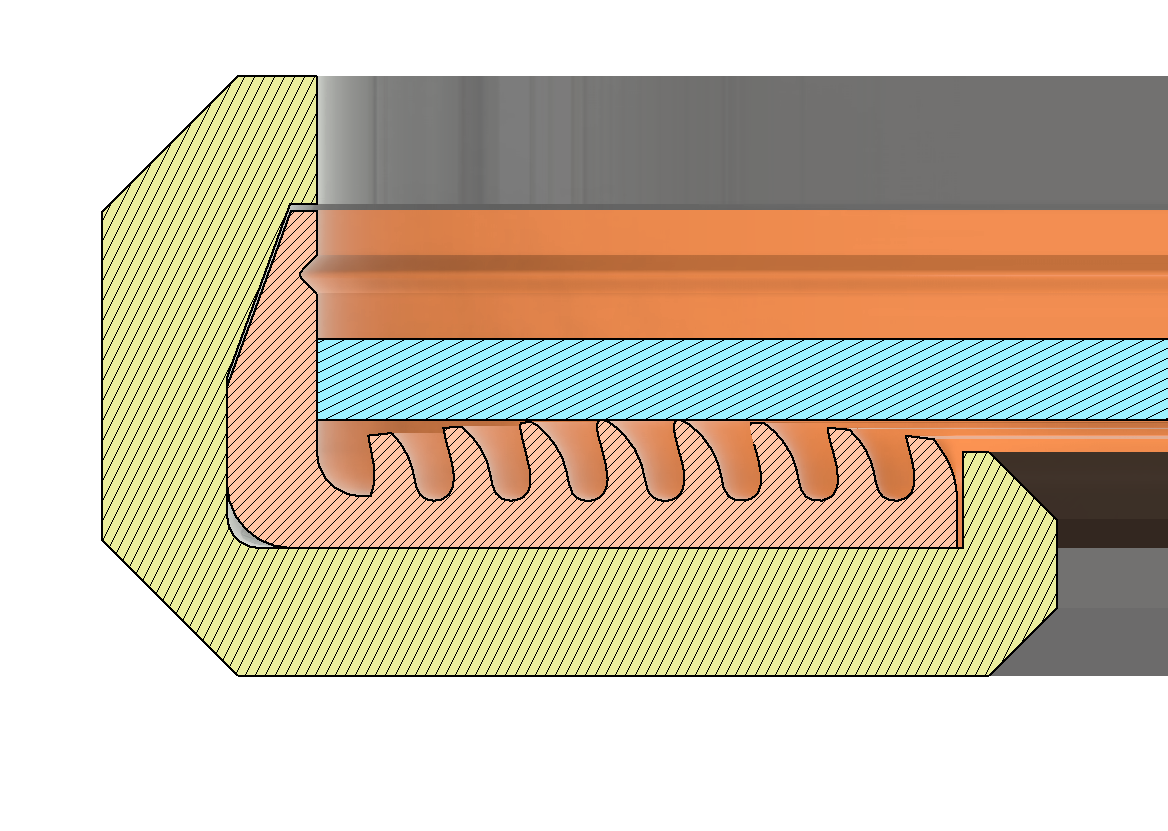
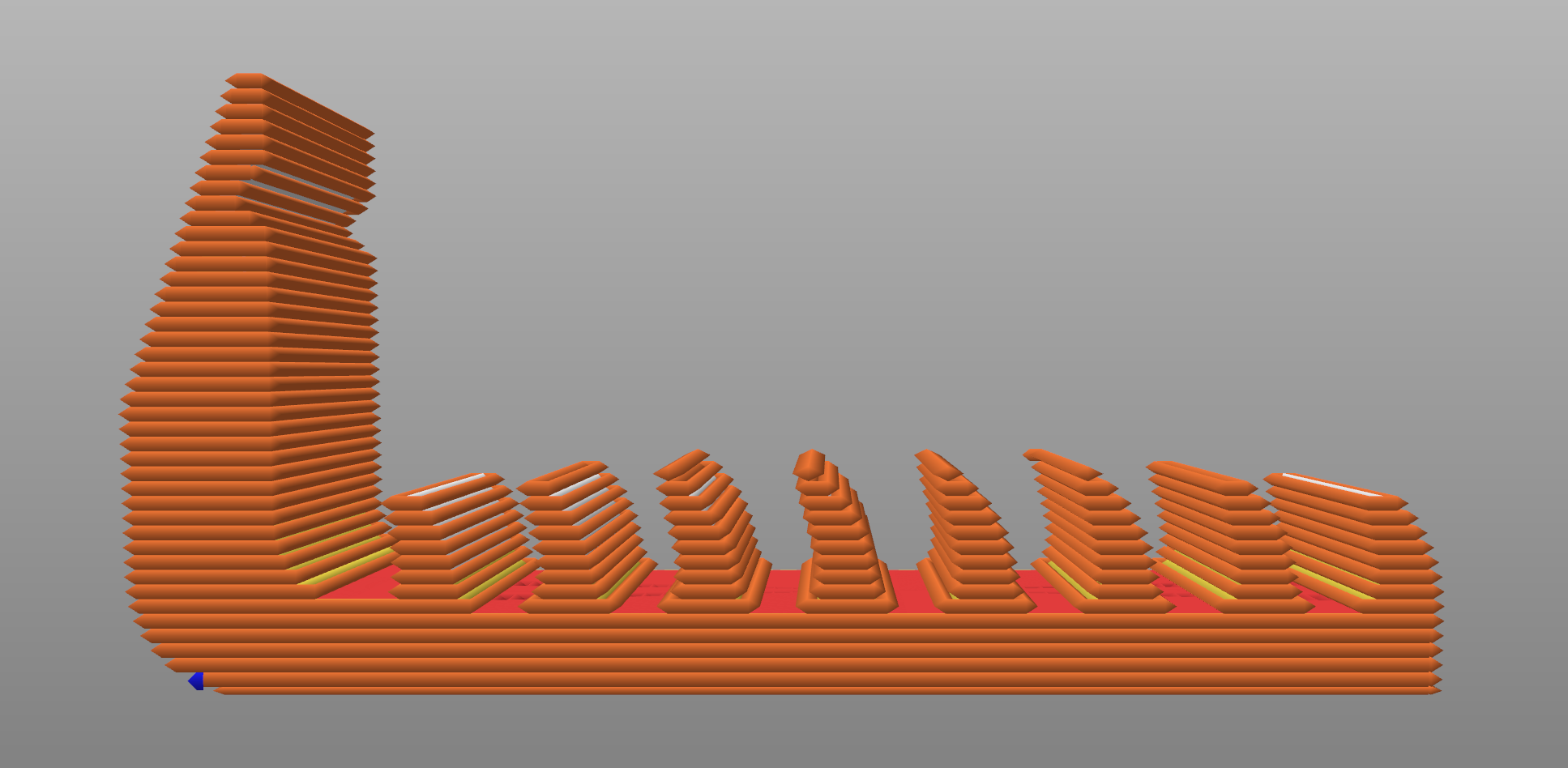
2024/02/12 - Starting on Support Structure(s)
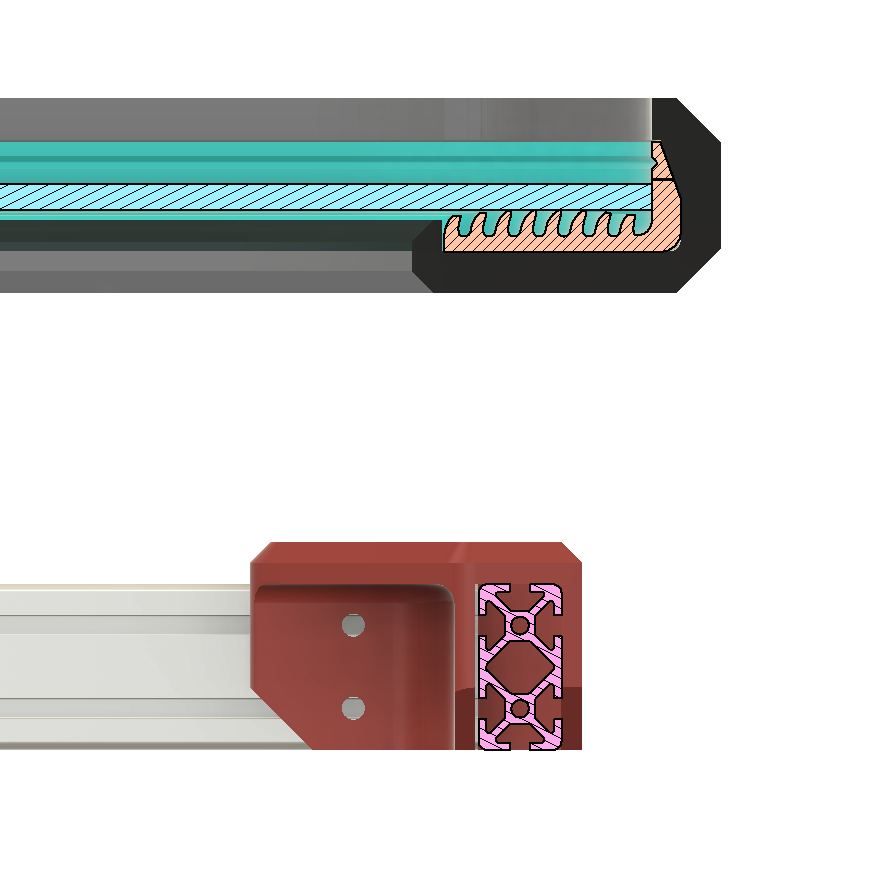
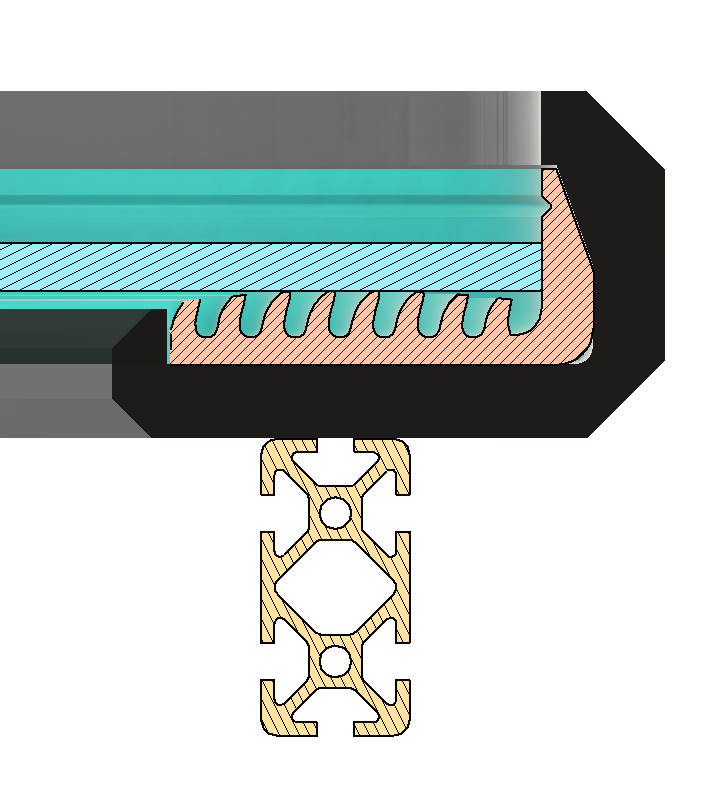
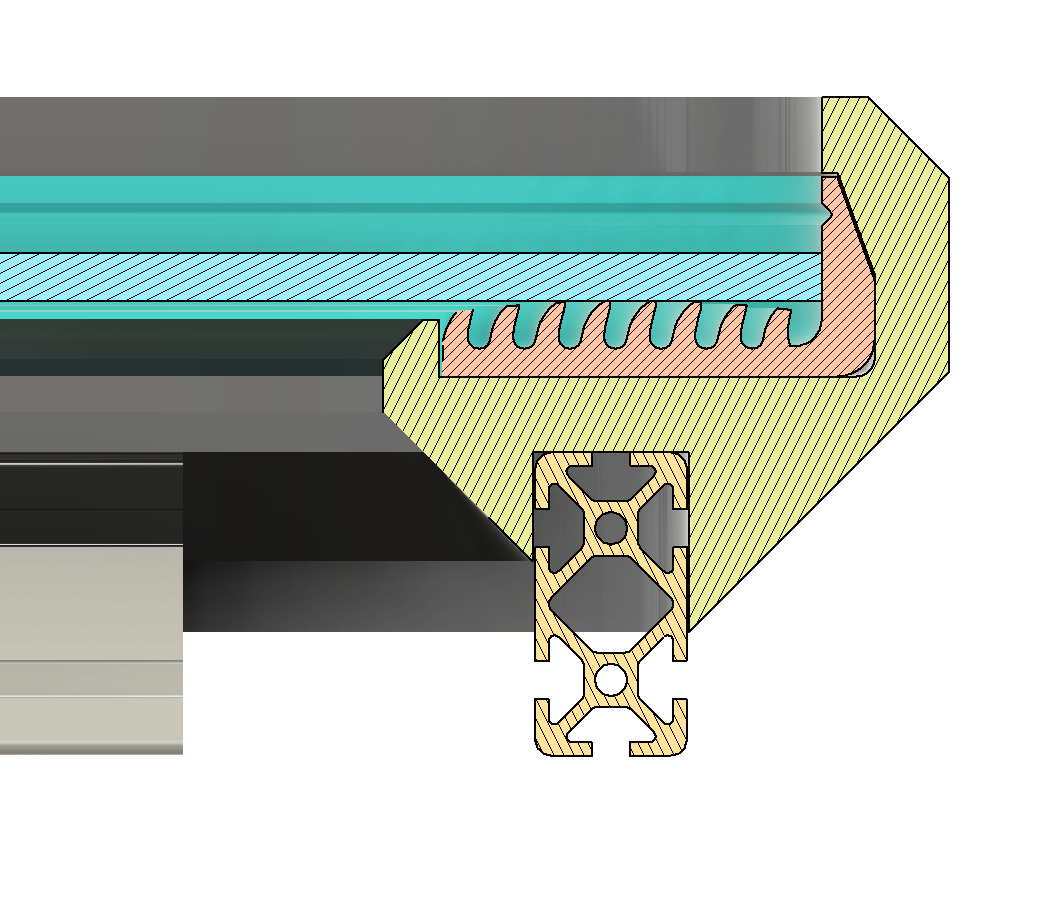
2024/02/13 Bit of optimizing
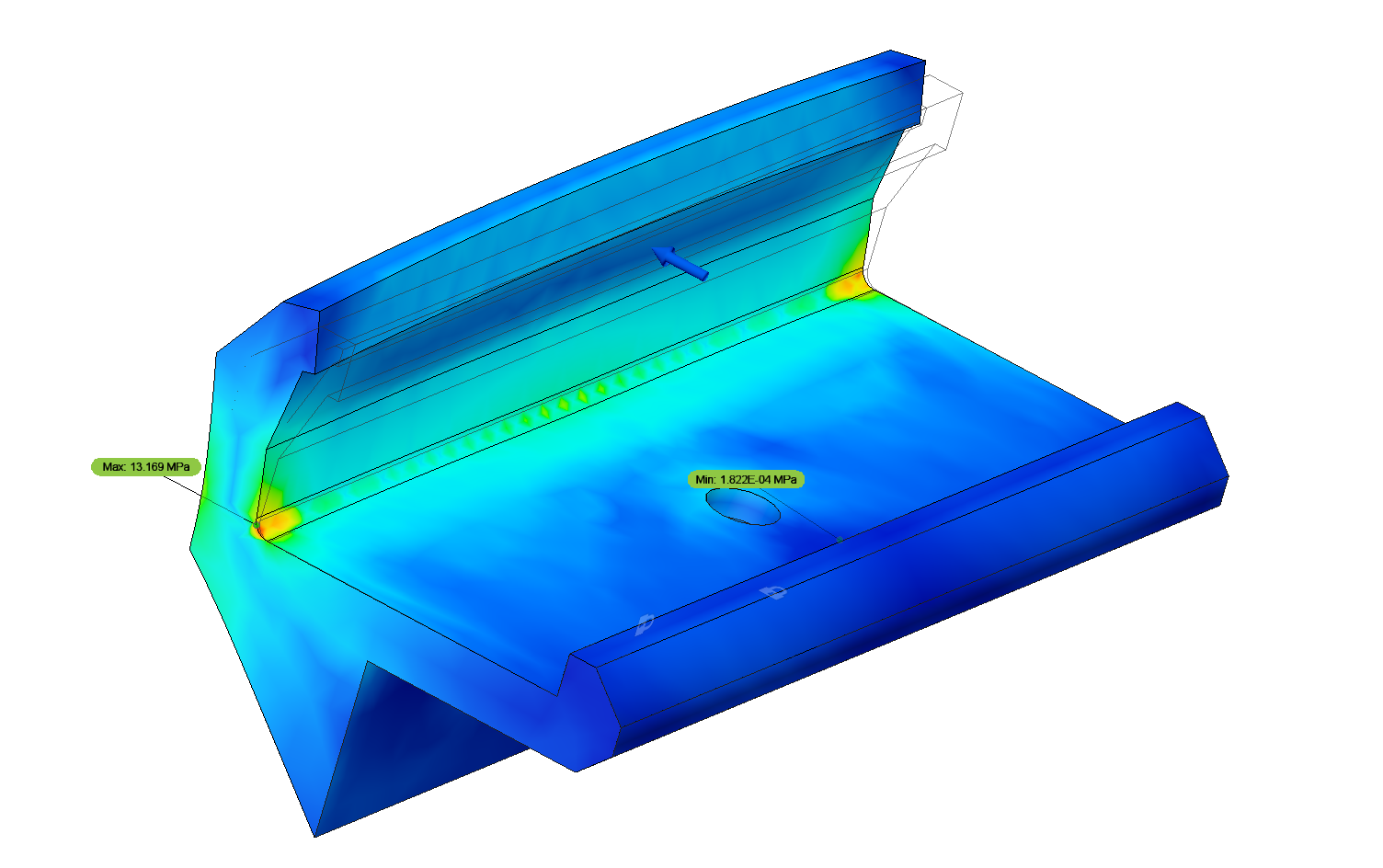
- Details
- Parent Category: BubsBuilds Projects
- Category: WIP
WIP - PAGE/PROJECT IN THE WORKS - WIP
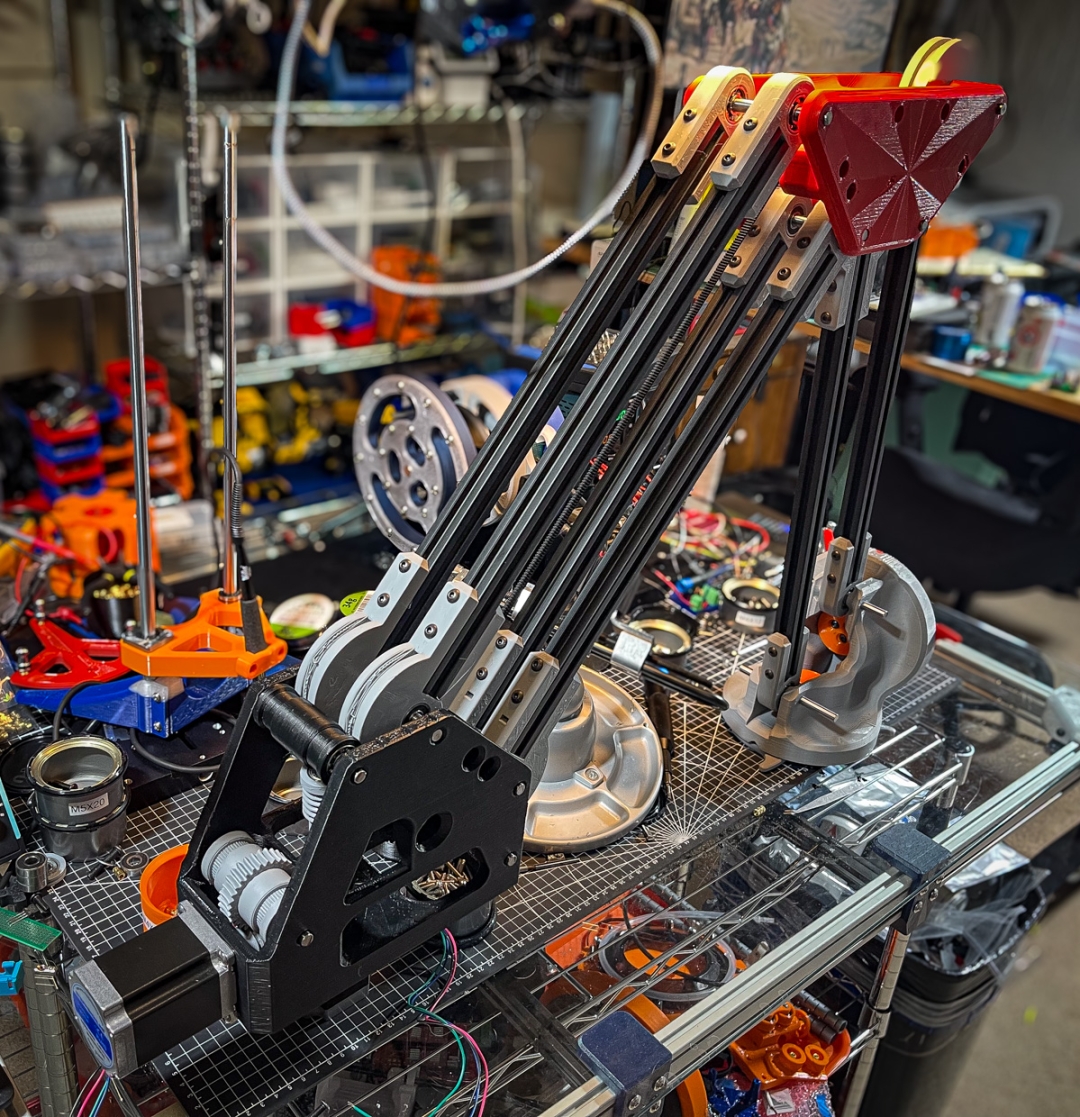
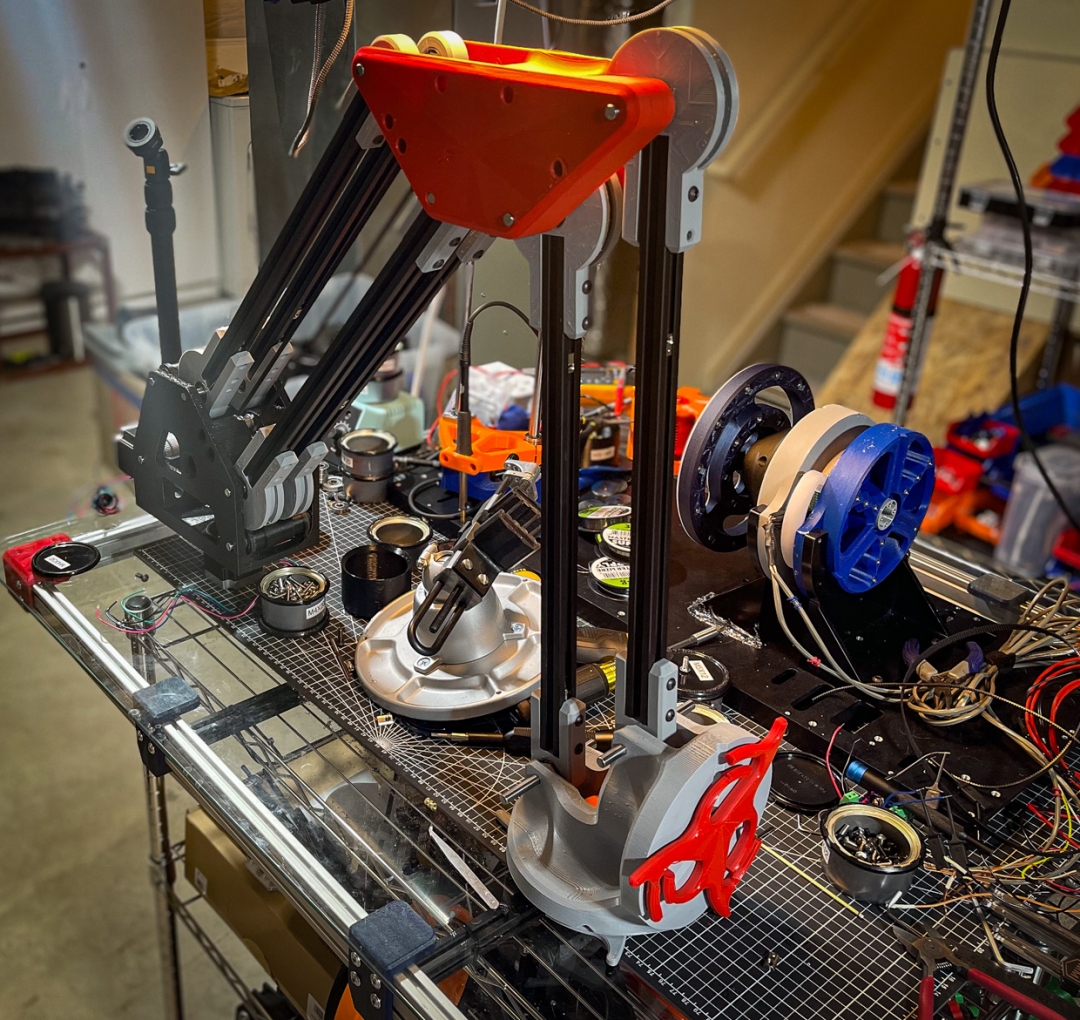
WIP - PAGE/PROJECT IN THE WORKS - WIP
Subcategories
Assorted (hopefully) "Useful Stuff" Projects Article Count: 12
Like the bucket of assorted fasteners on that bottom shelf, this category is for stuff that I didn't know how to group...oh, and speaking of those fasteners, check out the little sortin fella!
2020 Aluminum Extrusion Hardware
|
Quick Bolt Sorter
|
General Purpose Turntable - Gen1
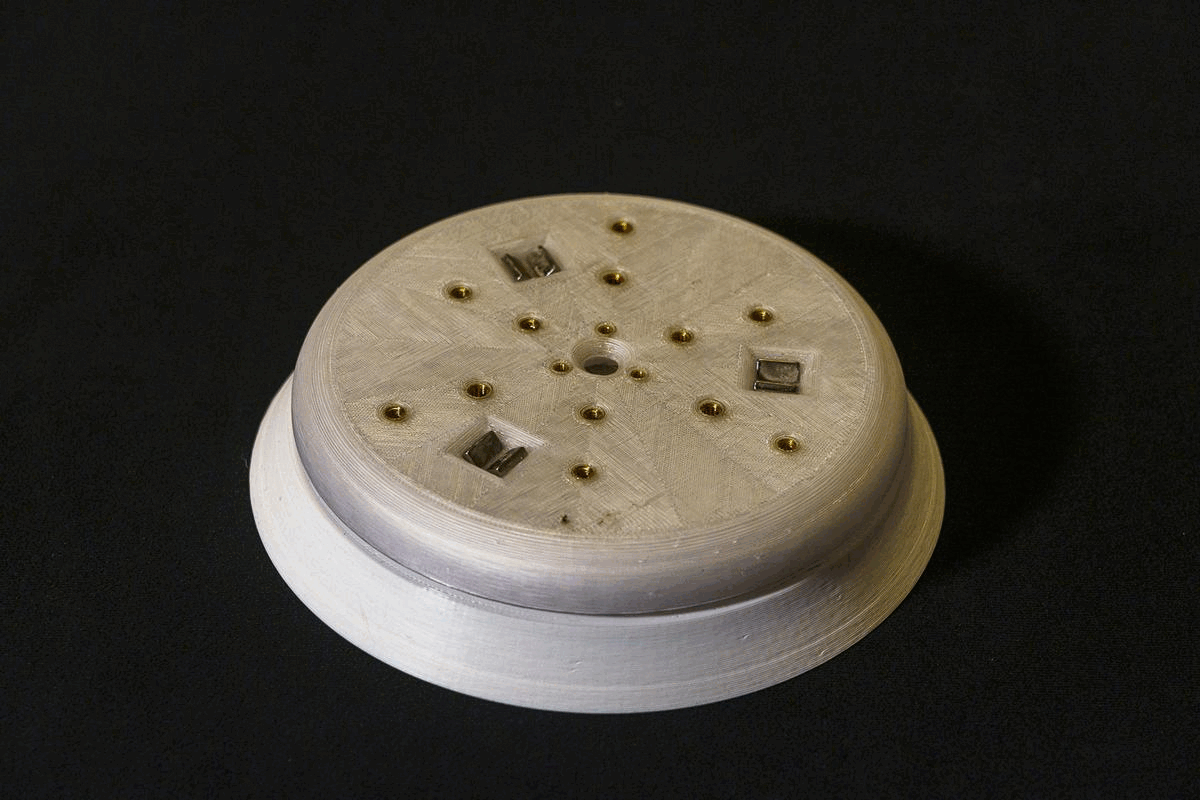
Games Article Count: 1
Generative Design Projects Article Count: 3
During the good financial decision-making times of Covid lockdowns, etc. I decided it was a good idea to buy a license for the Fusion360 Generative Design extension...Good news, I did finally pay that off :) I had worked around, and been somewhat involved in a handful of Topology Optimization/Generative Design projects through my work, and I've found the tech super interesting for some time. So after the free trial, and feeling like I was just starting to gain some level of competence in Fusion360's tool....I done did it, and bought the year. Ok, now that I'm done justifying that to myself...I mean you...
<engineering/design> What I really like about Generative Design is that it forces the designer to think about the thing they are trying to design from it's core requirements: Forces, Interfaces, and Keep Outs. I think it's far from perfect, especially given the still very primitive Design For Manufacture capabilities these tools have (among other shortcomings, but this one is certainly a big one to me.)
<precision engineering> One last also (for now), but ALSO, what I find exciting about these tools from a precision engineering perspective, is that the above-mentioned focus on forces and interfaces, these tools are extremely well-suited to kinematic/exact constraint designs! I think every one of the Generative Design projects below features at least some aspects of kinematic constraint (I say, "I think" because I may or may not be writing this before I go through my files and remind myself what all I actually made vs what I just thought about making ¯\_(ツ)_/¯ )
JFS Projects Article Count: 14
AgTech (aka finding a way to complicate and digitize gardening) Projects Article Count: 12
Hydration and Hydroponics Projects Article Count: 8
Peristaltic Pumpin Article Count: 4
A lot of projects I work on/have worked on seem to involve the controlled movement of fluids. Below is a bit of a history of my builds involving attempts at obtaining this controlled movement for incompressible fluids. I haven’t done much myself with making custom solutions for the compressible stuff, but if you’re interested in such things, I thoroughly enjoy Major Hardware’s “Fan Showdown” series :)
This article/section is by no means intended as a thorough overview on the design and operation of pumps. While I will try to give some overview on operating principles and design considerations as I go, this is mainly just going to be a wander through my personal builds and experiences.
Peristaltic Pumps
What is a peristaltic pump?
I’m sure there are innumerable sources online for (much better) detailed discussions of the workings of peristaltic pumps. So I’m just going to hit the highlights, and I’ll try to remember to find some promising links and add them below, should a deep dive seem intriguing to ya.
Basic Operation:
The fluid being pumped is carried into the pump in a compliant tubing. This tube is routed around some portion of a circular/cylindrical path around the axis of the pump and then exits the pump. This is one interesting/attractive aspect of peristaltic pumps, the fluid never has to leave the tube that it is in, making these pumps well-suited to situations where contamination and/or leaks are highly undesirable. The housing that features the cylindrical wall that the tubing is being routed along can be considered the Stator, and that is generally the nomenclature that I tend to use.

So if there’s a Stator, there must be a Rotor…? Yup, the rotor includes some set of features that extend out to some defined gap between this feature and the Stator wall. These features, which in many peristaltic pumps are rolling element bearings, pinch the tubing to the point of sealing (ideally) the tube. As the rotor turns, this contact point proceeds around the circumference. Because the pinched point of the tube is sealed, the volume of fluid in the tube ‘ahead’ of the pinch point are, as a result, pushed forward. So, keep rotating, keep pushing….pretty much as simple as that!
Pros:
- Positive Displacement Pump
- Because the pinch point is (ideally) fully sealing the tubing, the amount of fluid moved is directly proportional to the movement of the pump. This makes them very good choices for things like dosing pumps or other applications where the desired volume of fluid to be moved needs to be deterministic.
- This is a large driver for my initial interest in using peristaltic pumps. Their deterministic flow is/was very attractive for my plant growth experiments. They can give very repeatable watering volumes and nutrient concentrations.
- Fluid Isolation
- Because the fluid never leaves the tubing, these pumps can be suitable for moving hazardous materials. For example, I have been using a peristaltic pump for transferring 99% IPA
- Relatively Simple Construction
- Because the fluid does not have to be sealed within the pump, these pumps lend themselves well to DIY builds. No shaft seals, gaskets, etc. or complex (at least to do well) impeller design needed.
- Self-priming and Head height
- If well-sealed, these pumps are capable of self-priming (and even pumping air) and of achieving pretty impressive head heights (the measure of how high above the pump it can pump a column of water)
Cons:
- High drive torque
- Because of the preloading needed against the tubing, and the rolling friction, even with good rolling elements (more below on this), it can be quite easy to end up with designs that require quite a lot of drive toque.
- Tubing wear
- With the relatively large deformation and high number of cycles, the tubing will eventually fail, either due to material wear, fatigue cracking, or who knows what else. Because this failure mode can cause fluids leaking into your pump not designed to experience this fluid, this failure can potentially be quite problematic. So the use of high-quality tubing material and a plan for periodic maintenance, are worthwhile.
Test Build 1
A couple of years back, I had a concept for an in-line-mixing hydroponics system. The idea being that the supplies to the system would be just pure water and nutrient concentrates, and a series of pumps and valves would allow precise dosing mixes to each target plant in a system (I refer to this concept as Rail Yard Hydro, since it moves the fluids around the tubing network quite like rail cars are moved around a rail system. I’m planning to add a separate page diving into that one a bit deeper since it is the design scheme I am using in my current projects.)
Well, to facilitate this plan, I wanted to find an option for a dosing pump that I could integrate in to my control system (aka Arduinos and Raspberry Pi’s :)). Unfortunately, I quickly found that a servo-driven peristaltic pump could easily set me back north of $100….so I set out to spend many multiples of that making my own!
Actually, when I saw the pricing, I decided I should see if I could make myself a cheapo, manual version that I could use to just test out some basic questions on the Rail Hydro idea (mainly verifying that I could induce good material mixing in-line and that there was no cross-contamination between fluid reservoirs.) And so, ‘twas this endeavor that resulted in the pump I’m apparently referring to as “Test Build 1”
Design Objectives:
- Be a peristaltic pump
- Provide a full seal (at 100mm head)
- Be hand-cranked
- Not require any parts that would have to be ordered (I’m impatient)
The Build
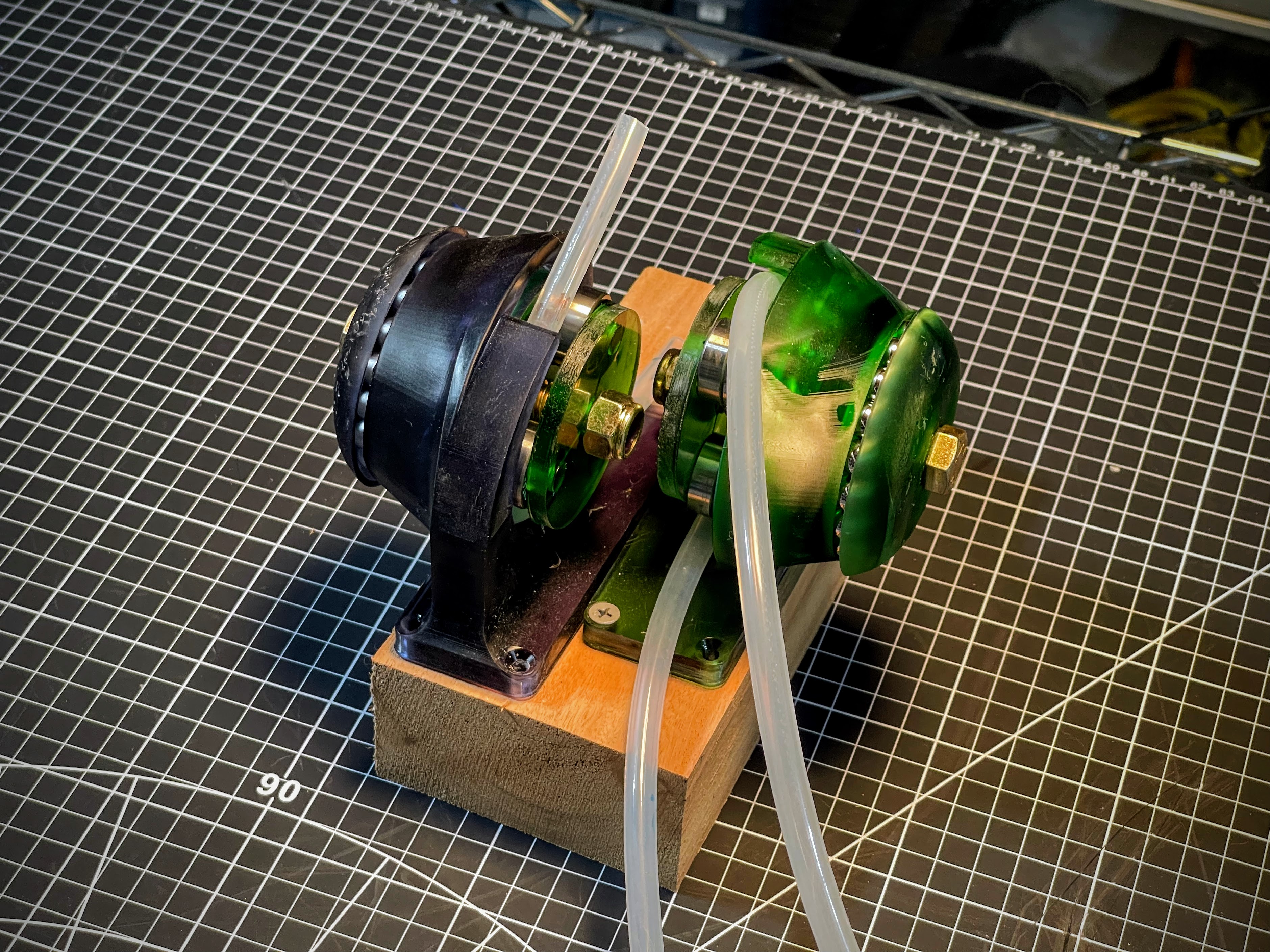
She ain't pretty (especially after a good while of getting knocked around), but the pic above shows the dual pump setup I rigged up for my testing needs. I was VERY pleasantly surprised that, other than a tweak to the hand wheel, these things worked pretty damn well!

I decided upfront that I was going to go with a resin printed build, because I thought the high stiffness and good surface finish throughout the 'pinch region' would give me a better chance. Since I was already going to have the good surface roughness, I might as well also integrate the main bearing into the printed parts.
In the image of the model, below, the Stator is the part shown in green, and the Rotor is shown in blue(ish.) Riding on the rotor are roller skate bearings to provide the contact with the tube. Race 1 has v-grooves on both sides of the race, providing the main constraint for locating the rotor, and Race 2 has a v-groove on the Stator, but only a single plane of contact on the Rotor side. This keeps from over-constraining the bearing.
 |
 |
The absurdly overkill bolt running through the center is a real showcase of "using what I had on hand" :) in that these were the only bolt/nut sets I had on hand with the length I was looking for.

